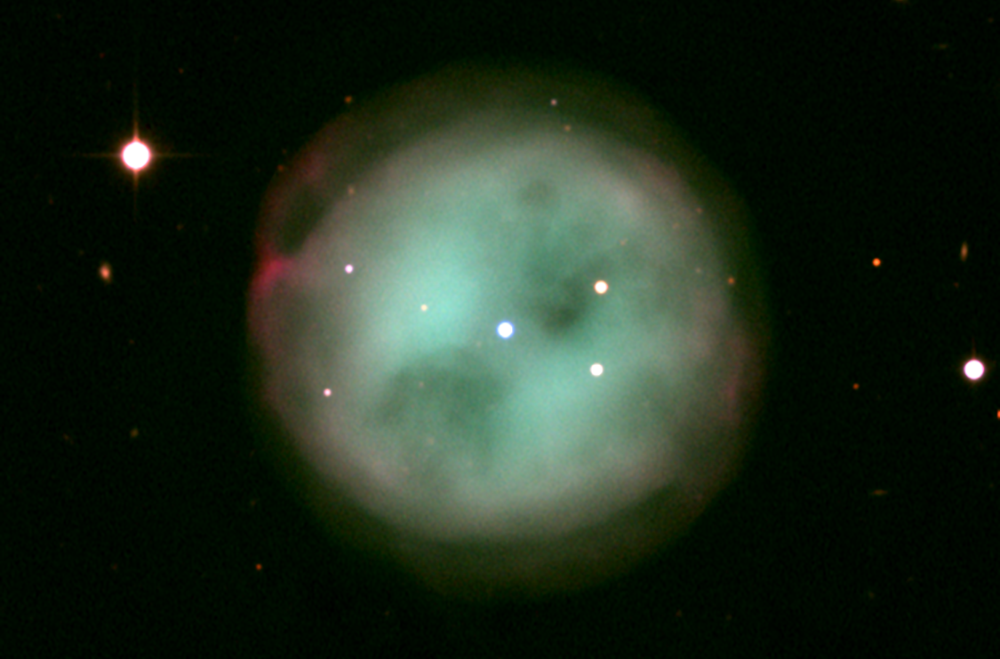Welcome to this month’s update to what’s in the night sky for March.
In the Elan Valley International Dark Sky Park, darkness falls at around 7.45pm at the beginning of the month and 9.45pm at the end.
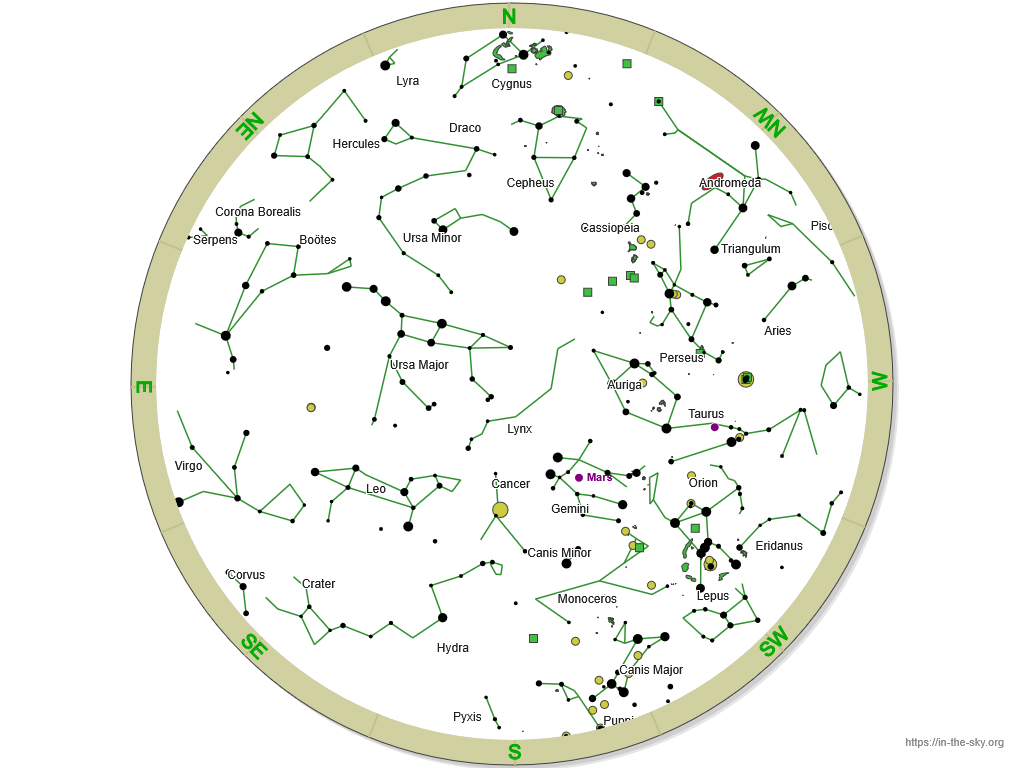
An all-sky view of the constellations from 10pm in March from in-the-sky.org
Facing south at 10pm, you will see the constellations of Monoceros, Cancer and Canis Major. Ursa Major is very high in the night sky, reaching the zenith and westwards lie the winter constellations of Gemini, Orion, Lepus, Taurus and Auriga. The spring constellation of Leo is well-placed, with Virgo rising in the east and Boötes with the bright star Arcturus low on the north-eastern horizon.
The New Moon occurs on 14th March and Full Moon on 29th March.
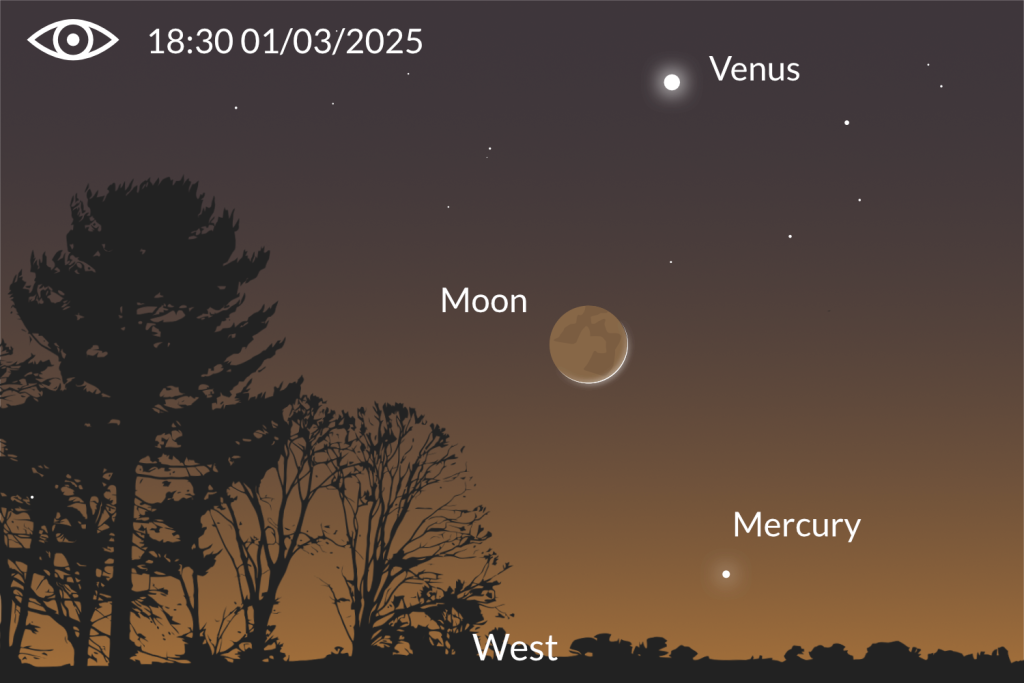
Catch a glimpse of the new crescent Moon, Mercury and Venus
If you have never seen the planet Mercury before, this month will provide the perfect opportunity for you to spot this tiny, but mighty planet.
On 1st March, pop outside after sunset and wait for the planet Venus and the two-day-old Moon (with earthshine) to emerge during dusk. As a bonus treat, take the opportunity to spot the planet Mercury too – it will be the lowest ‘star’ on the western horizon.
On 8th March, Mercury will be at its greatest eastern elongation; being the furthest point from the Sun.
You can see this object with the unaided eye but if using binoculars, please wait until the light from the Sun has faded as looking directly into sunlight with magnified optical aids can damage your eyesight.
Conjunction of Venus and Mercury
On 9th March, look out for a conjunction of Mercury and Venus, emerging from the west during dusk; Mercury will lie at the 7 o’ clock position to the bright planet.
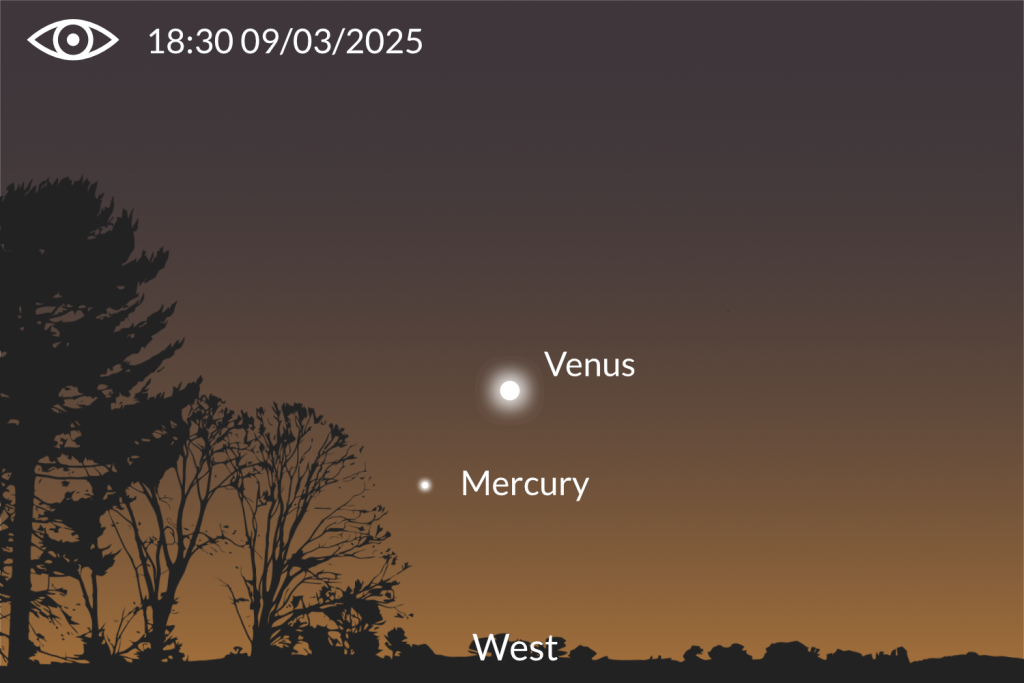

The Spring Equinox falls on 20th March this year, in other words, the beginning of astronomical Spring. On this day, the hours of daylight and darkness are the same. Following this day, the northern hemisphere tilts towards the Sun, heralding warmer months and longer days.
On 30th March, the clocks go forward one hour, so don’t forget to set your clocks when you go to bed on Sunday night.
Partial Solar Eclipse
On 29th March, there will be a partial solar eclipse in the UK. In Mid Wales, 35% of the Sun will be obscured by the moon. The eclipse will commence at 10am as the Moon passes in front of the Sun, with the maximum occurring at 11am, with the Moon leaving the face of the Sun at midday.
The Elan Valley Dark Sky Team will be setting up just outside the Elan Valley Visitor Centre with their viewing equipment and solar glasses and you are welcome to drop in and watch the eclipse with us. Weather permitting, we will be there between 10am and 12 noon.
Animation credit: Stellarium
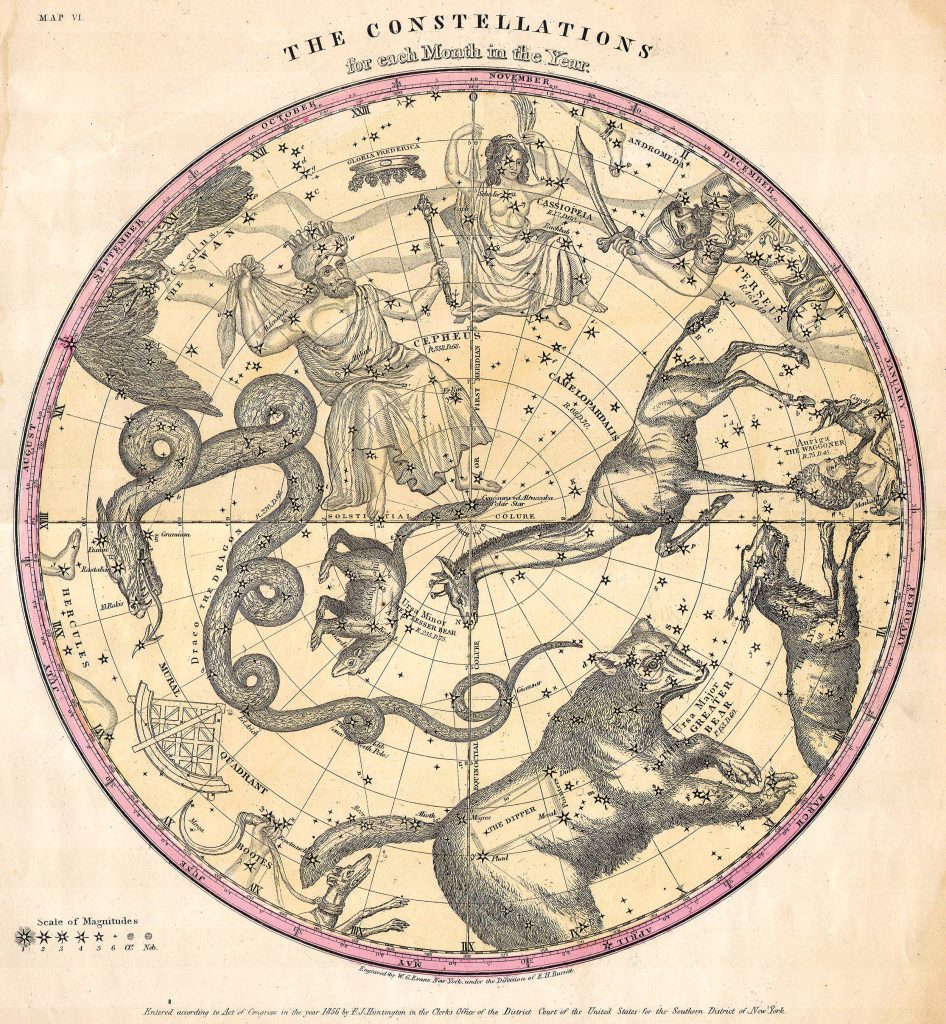
Constellation of the Month
Each month, we will feature a constellation and the mythology behind it.
There are 88 IAU recognised constellations in the night sky and around 36 that are observable in the northern hemisphere. Some of the names of the 88 IAU recognised constellations are several thousands of years old.
With the advent of science and rational thinking, and more of a focus on the observable world, stars are no longer used for the farming calendar, for navigation or conveying social or religious values.
So get outside and see if you can spot these constellations. The best time to see each constellation we feature is around 90 minutes after sunset.
This month, we will look at the constellation of Ursa Major.
Ursa Major is a well-known constellation in the night sky. It is also known as the Great Bear, the Big Dipper or the Plough.
This constellation is circumpolar, which means it never sets and this time of year, it is very well placed in the night sky. It can be found easily by looking out for a ‘saucepan asterism’, which is the main body of the constellation.
According to Greek mythology, Ursa Major represents Callisto, who Zeus fell in love with and had an affair. When they were found out by Zeus’ wife Hera, Zeus, wanting to protect his mistress, turned Callisto and her son Arcas into bears, picking them up and throwing them among the stars. Callisto is represented by Ursa Major (Latin for Great Bear) and Arcas being represented by Ursa Minor, the small bear.
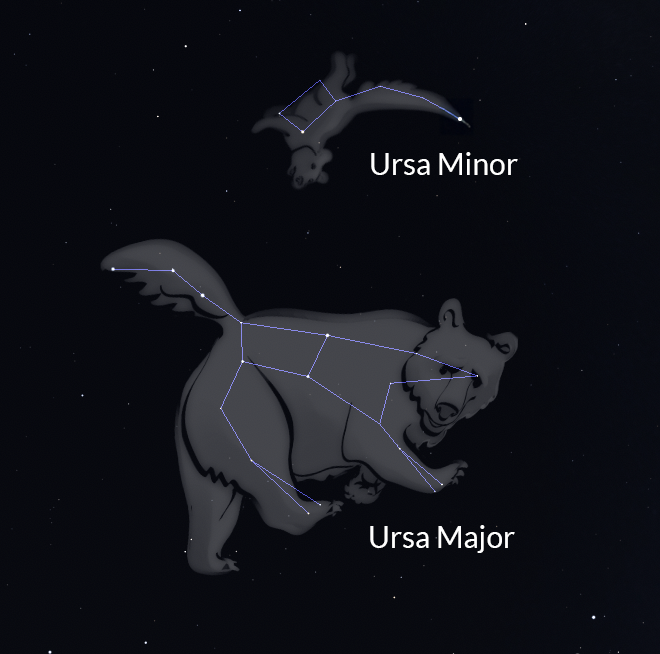
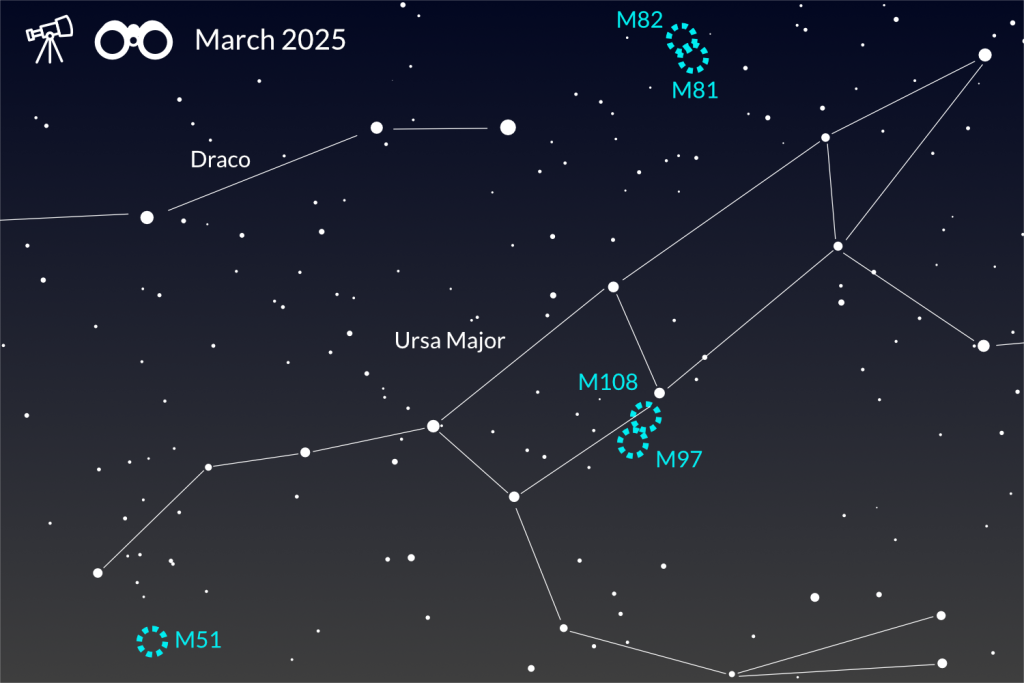
There are a few interesting deep sky objects to look out for in Ursa Major. You will need your binoculars or a telescope with an aperture of four inches and above to see them.
Messier 81 & Messier 82 – ‘Bode’s Nebula’
M81 Coordinates: RA 9h 55m 33s | Dec +69° 3′ 55″
M82 Coordinates: RA 9h 55m 52s | Dec +69° 40′ 47″
The easiest to find is ‘Bodes Nebula’, which comprises M81 and M82, two galaxies that interact with each other. This means they are gravitationally locked together in a cosmic dance.
M81, the larger of the two galaxies in this beautiful image, is also a ‘grand design spiral galaxy’ because of its intricate and well-formed spiral arms, which nearly wraps around its entire circumference.
It was discovered by Johann Bode in 1774 who classed these objects as nebulae – as there had not been any official classification between galaxies and nebulae.
Nebula is Latin for cloud or fog.
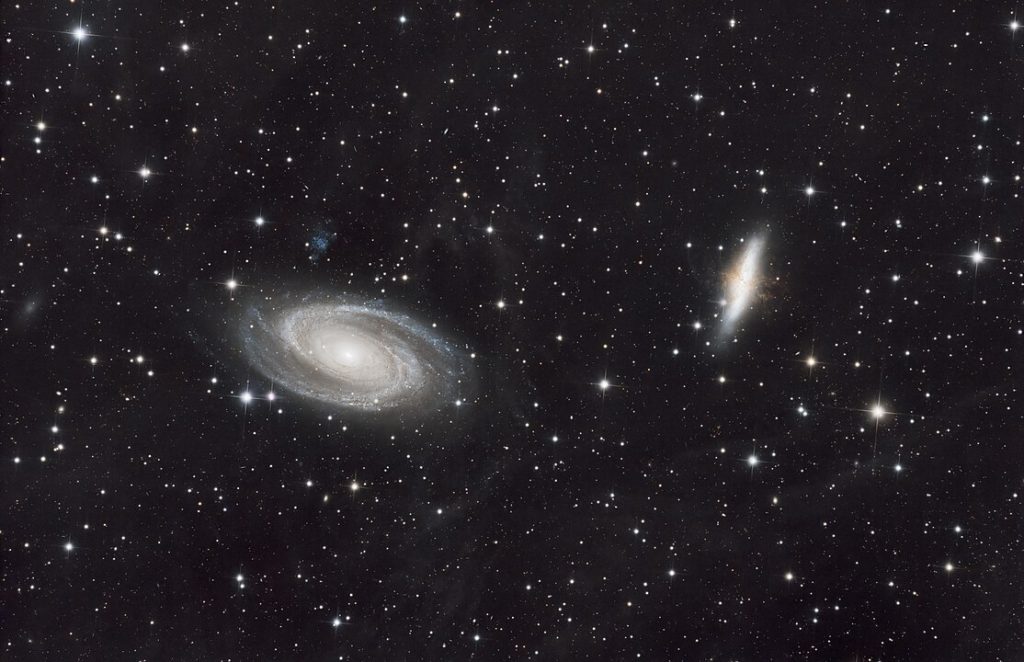
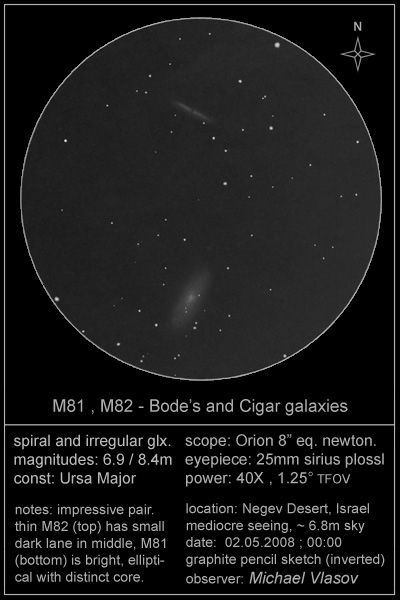
M82 is also a fascinating galaxy. From our perspective, the galaxy is viewed edge-on which reveals an interesting core of filaments. This is caused by a massive burst of star formation and you can see this as a ‘crack’ running through the centre through an eight-inch telescope in a dark sky. These galaxies are pleasing to the eye through an eyepiece at low magnification.
M81 lies 12 million light years away and M82 lies 11.4 million light years away.
By Michael Vlasov of Deepskywatch.com
Messier 51 – ‘Whirlpool Galaxy’
Coordinates: RA 13h 29m 53s | Dec +47° 11′ 43″
Messier 51, or the Whirlpool Galaxy, lies just below the end of the handle end of the saucepan asterism at 31 million light years away from us. It also comprises two interacting galaxies and can be seen with binoculars.
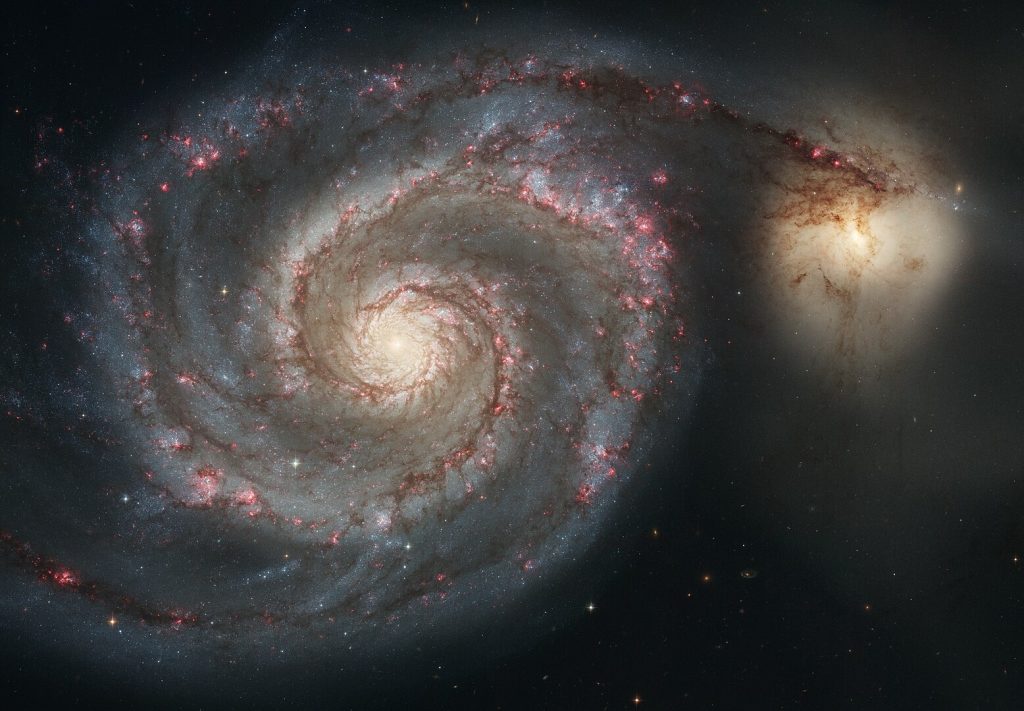
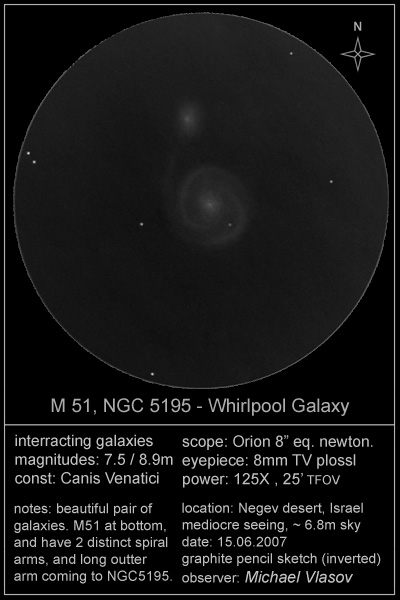
A small telescope will reveal two galaxies and with a larger telescope of eight inches and larger, you may be able to discern spiral arms in the larger galaxy (NGC 5195) the spiral arm that appears to connect the two. If you can’t see the spiral arms at first, try to use your superpower of averted vision to see if they pop into your peripheral view.
By Michael Vlasov of Deepskywatch.com
Messier 97 – Owl Nebula
Coordinates: RA: 11h 14m | Dec: +55°01′
For a dark sky challenge, look for the Owl Nebula (M97) – you will definitely need dark skies and a telescope larger than eight inches of aperture to spot this one.
With the aforementioned telescope size, you may see a faint patch of light but larger apertures may tease out one or two of the large holes that makes this planetary nebula resemble the face of an owl.
This object lies relatively close to us at a distance of 2600 light years.
By NOIRLab / NSF / AUR

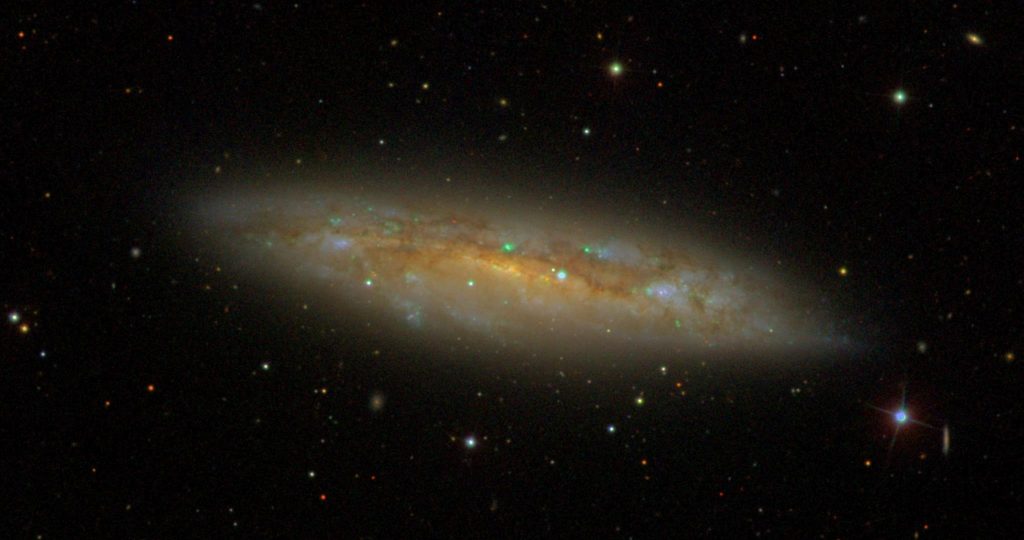
M108 ‘Surfboard Galaxy’
Coordinates: RA 11h 12m 58s | Dec: +55° 32′ 14”
Finally, near the Owl Nebula lies a needle-shaped galaxy that can be viewed nearly edge-on. M108 is also known as the ‘Surfboard Galaxy’, lying 46 million light years away.
You can find this object using a telescope of eight inches of aperture and above – it will look like a faint elongated streak of light.
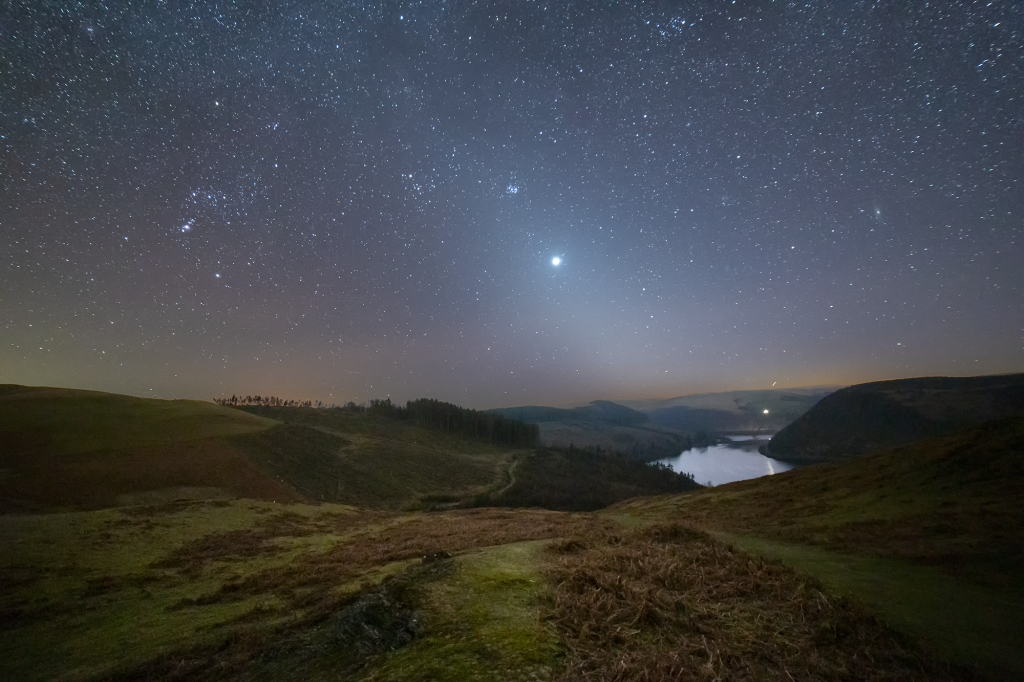
Zodiacal Light
March is a great time to see the Zodiacal light. This phenomenon can be seen from as early as the middle of February but is best seen during March, peaking at the equinox. It occurs every night but the ability to see it is much hampered by light pollution, so you will need a very dark sky to see this.
At around 90 minutes after sunset, look for a single cone-shaped light source emanating in the west, shining diagonally at a slight angle eastward. If you can’t see it, use averted vision to see if it appears. Averted vision is a useful skill to learn in astronomy – look to one side of the target and use your peripheral vision as faint targets can be seen more easily, as the centre of the eye contains colour-sensitive cones and off centre is where the light sensitive rods lie – you will be using these to tease out as much light as possible. This is also a useful skill to use if you are finding deep-space objects through telescopes or binoculars.
The Zodiacal light occurs when sunlight lights up clouds of tiny dust particles released from comets as they pass through the Solar System. These dust particles orbit on a plane in the Solar System and from our position in the Solar System at this time of year, we can see this wonderful and ethereal phenomenon.
Image: ©Sam Price
If you have a smartphone with night sky photographic capability and a tripod, the Zodiacal light does photograph well – more so with cameras with high ISO capability and a sturdy tripod. Use a lens between 14 and 24mm of focal length, an aperture open at around ƒ/2.8 or wider, and set your lens to focus to infinity. Start with an ISO of 1600 and a 30 second exposure. Increase or decrease the settings as needed.


